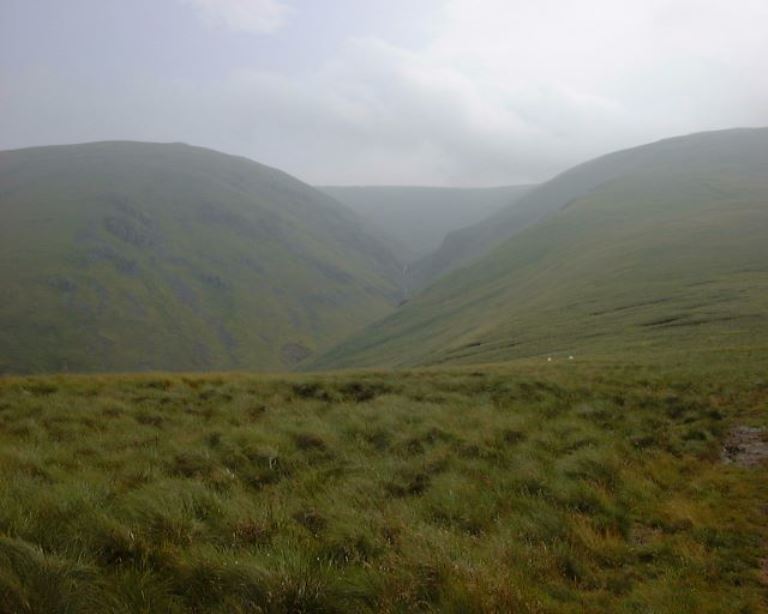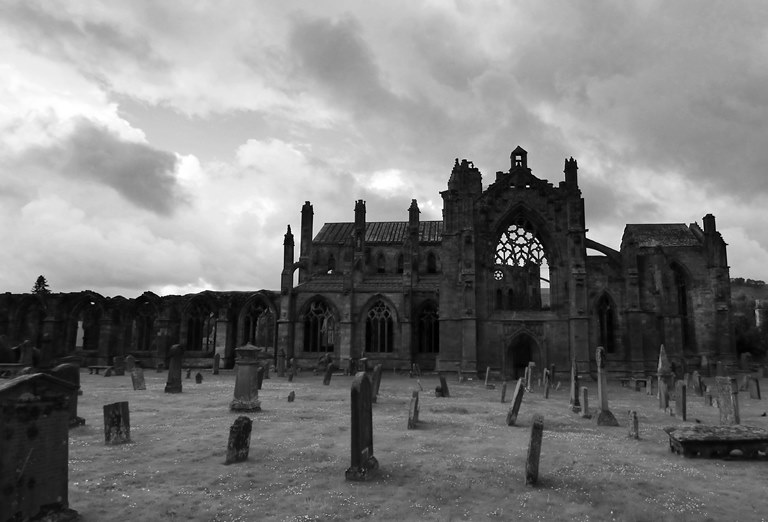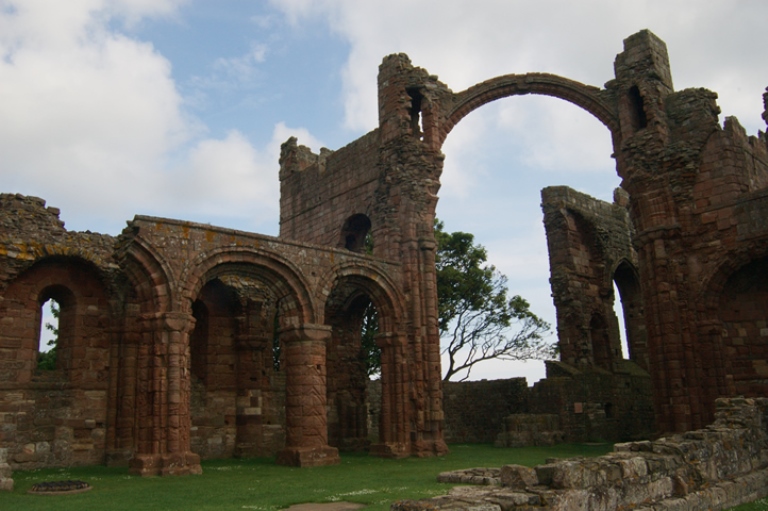St Cuthbert's Way
Key information: St Cuthbert's Way 
- St Cuthbert's Way runs for 100km between Melrose in Scotland's Borders to Lindesfarne on the Northumbrian coast.
- St Cuthbert of Lindesfarne became famous in the 7th century as a prophet and a performer of miracles. The trail winds through countryside associated with him, over hills, across farmland and along river valleys to the sand and mud flats at Lindesfarne, through historically rich and naturally interesting (as well as lovely) countryside, usually on old tracks.
- Lovely and interesting towns to explore. Staying here is a pleasure, not a function.
- Unpredictable weather. Come prepared.
Walkopedia rating
- Walkopedia rating82
- Beauty30
- Natural interest14
- Human interest10
- Charisma28
- Negative points0
- Total rating82
Vital Statistics
- Length: 100km/7 days
- Level of Difficulty: Moderate
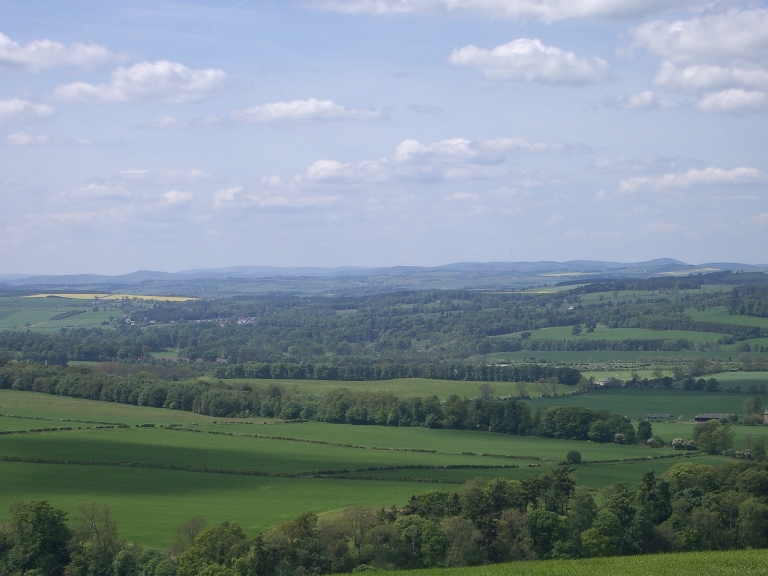
WALK SUMMARY
St Cuthbert's Way runs for 100km between Melrose in Scotland's Borders to Lindesfarne on the Northumbrian coast.
St Cuthbert (634-687) was Prior, a hermit and finally Bishop at Lindesfarne, and became famous as a prophet and a performer of miracles. He was educated at Melrose by Irish monks, evidence of the somehow surprisingly (to us moderns) international world he lived in.
While northern England received many pilgrims after Cuthbert's death, the eponymous Way is a recent creation, although following ancient routes - back to the Romans and before - for much of its course. It has variuous associations with St Cuthbert himself, as he walked this land extensively spreading the Word, as well as the periods of his life at lovely Melrose and holy Landesfarne.
Historical remains range from hill-forts and a Roman signal station on the Eildon Hills to stretches of Roman road, to towers and castles recalling the centuries of raiders and border turmoil, to churches and abbeys, farms and towns, to the final causeway, ruined alley and castle at Lindesfarne.
The Borders, the hill country between England and the Scottish lowlands, is a beautiful and atmospheric area - and relatively empty of walkers. These are generally grassy hills and ridges, rolling rather than sheer, treeless other than a certain amount of rather depressing conifer forest, which separate valleys which vary from rushing upland streams to the grand, valleys of impressive rivers such as the Tweed. The scenery includes rough crags, moorland, hill farmland and wide stretches of good arable land. And even coastal cliffs and wildlife reserves.
The landscape is shaped by its geology: sedimentary rocks have been buckled and lifted by the impact of the Highlands with the European tectonic plate, resulting in gentler, in more rounded hills than the rough, broken grandeur of the ancient, igneous Highlands.
The route is divided into the following sections:
- Melrose - St Boswells via Dryburgh
- St Boswells - Harestanes
- Harestanes - Morebattle
- Morebattle - Kirk Yethholm
- Kirk Yetholm - Wooler
- Wooler - Fenwick
- Fenwick - Lindisfarne
The Way begins by crossing the peculiar but delightful Eildon Hills , a group of three steep volcanic tumps protruding from the rolling countryside just south of Melrose, which offer grand 360? views of the surrounding landscape. A hill fort and Roman signal station crown the northernmost hill. Unusually for the area, they are heather-clad.
After that it is the Tweed valley and rolling farmland for some way. The 25km (16 mile) stretch of the Way between St Boswell's and Harestanes, south-east of Melrose, follows a delightful curve of the Tweed then a stretch of Roman Dere Street.
The path then skirts the Cheviot Hills between Cessford castle and Wooler, crossing the border into England. Then it is the rather bleak moorlands of the Northumberland National Park.
After some relatively tame coastal plain walking, you get your first sight of Landesfarne at St.Cuthbert's Cave, where the Saint's body is said to have lain after being purloined by maurauding Vikings.
You then cross the tidal sand and mud flats to the Holy Isle, either on the modern causeway or along ancient Pilgrim's Way, which is marked by stakes in the sand.
There are lovely and interesting towns to explore, from the pleasing market town of Moffat to ancient Melrose, to Kelso and Jedburgh. Staying here is a pleasure, not a function.
Have a look at the dreaded TripAdvisor - you should get some good, current views on relevant areas.
This page is at an early stage of development. Please help us by recommending your best walks, making suggestions and sending photos! Thank you!
See also our Scottish Borders page
WILLIAM MACKESY'S ACCOUNT
of this walk
Other accounts: share your experiences
Your comments on this walk, your experiences and suggestions, and your photos are very welcome. Where appropriate, you will be credited for your contribution.
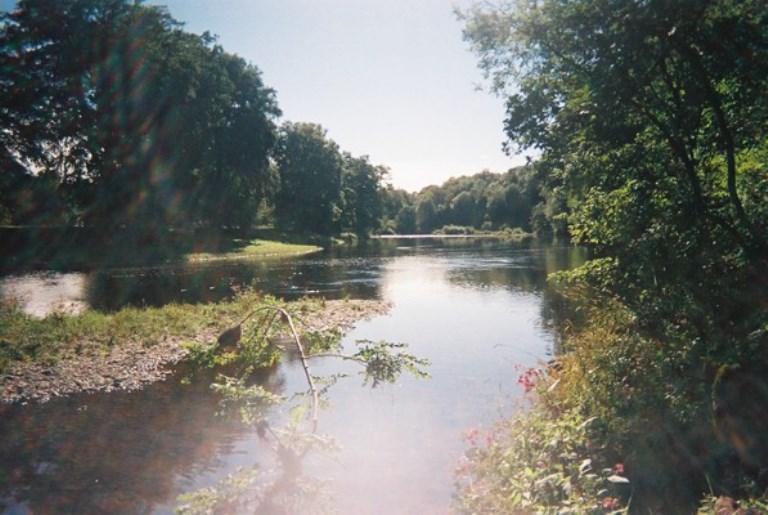
We have a lot of helpful practical information and tips about this walk, covering everything from the best books and maps, to timing and weather, geting there, possible problems, whether you need a guide and where to find them, and useful websites. This section is only open to members.
Membership is FREE AND JOINING TAKES 30 SECONDS. To login or sign up click here
Safety and problems: All walks have inherent risks and potential problems, and many of the walks featured on this website involve significant risks, dangers and problems. Problems of any sort can arise on any walk. This website does not purport to identify any (or all) actual or potential risks, dangers and problems that may relate to any particular walk.
Any person who is considering undertaking this walk should do careful research and make their own assessment of the risks, dangers and possible problems involved. They should also go to “Important information” for further important information.
Anyone planning an expedition to this place should see further important information about this walk.
Safety and problems: All walks have inherent risks and potential problems, and many of the walks featured on this website involve significant risks, dangers and problems. Problems of any sort can arise on any walk. This website does not purport to identify any (or all) actual or potential risks, dangers and problems that may relate to any particular walk.
Any person who is considering undertaking this walk should do careful research and make their own assessment of the risks, dangers and possible problems involved. They should also go to “Important information” for further important information.
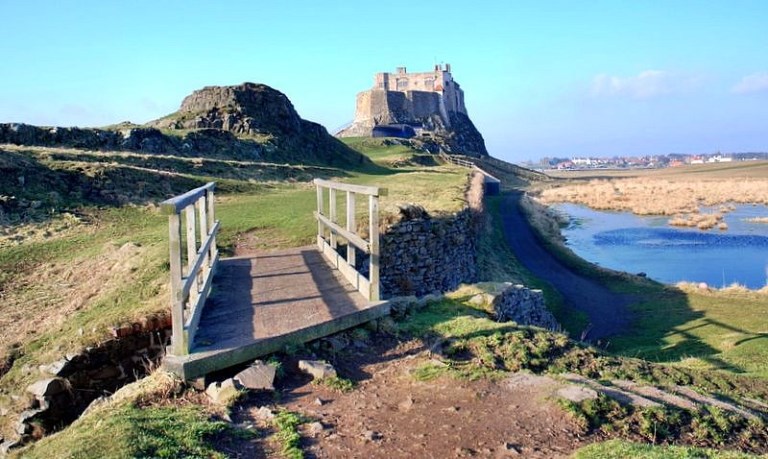
OTHER ACCOUNTS
share your experiences
Add your experiences, suggestions and photos. We would be delighted to receive your writing and ideas (which will be attributed appropriately where published).
Anyone planning an expedition to this place should see further important information about this walk.
Responsible travel matters, a lot. How you travel will make a real difference - for better or worse. PLEASE consider this when making plans. Read more



